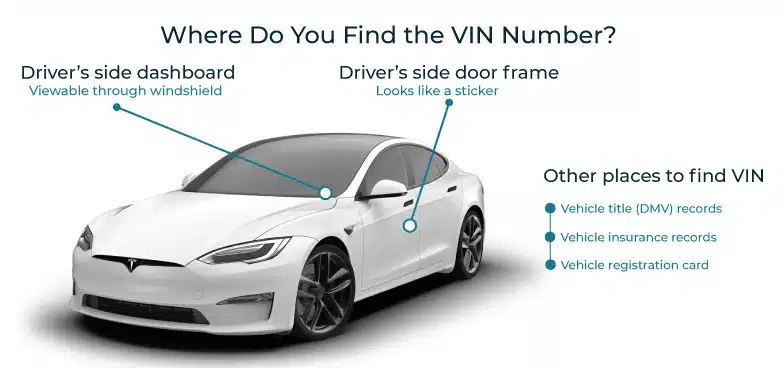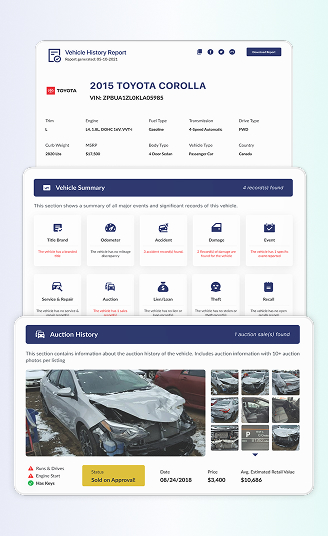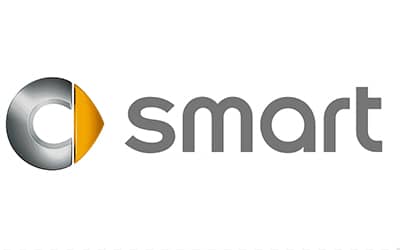
Smart Recall Check
Check your Smart recalls by VIN to uncover safety defects, risks, and available remedies. Simply enter your VIN to see repair details, claim free fixes, and maintain your car’s safety and value. Powered by Detailed Vehicle History.
What is a Smart Recall?
Smart built its name on ultra-compact city cars, the Fortwo most of all. But even tiny cars face big safety rules. A Smart recall happens when Smart/Mercedes-Benz or the U.S. government determines a component could compromise safety or flout a safety standard. Dealers then repair, replace, or reprogram at no cost to you.
Because the Smart brand in the U.S. wrapped up after 2019, service continues via Mercedes-Benz dealers, and global Smart development now sits in a joint venture with Geely. Same duty, different corporate structure. The safety fix remains mandatory.
Why You Should Check the Smart Recall History?
When considering purchasing a used Smart, it’s essential to run a Smart Recall Check to ensure the safety of the vehicle.
Below are some reasons why you should check the recall:
Avoid Unsafe Smart
Any vehicle can develop safety problems, and Smart is no exception. A quick recall check tells you if your car has outstanding campaigns affecting safety. If it does, schedule the no-cost fix and keep the service record. It’s a simple step that helps make sure your Smart is safe for you and your passengers.


Compliance
Run a recall check before you commit. By law, automakers must alert owners to safety defects and provide free repairs. Confirming your Smart’s recall status helps you avoid paperwork problems, supports insurance and financing, and protects resale value. A Smart with open recalls may not meet federal safety standards, which can make ownership and future sale more complicated.
Avoid Out-of-Pocket Repair Bills
Run a Smart recall check before you buy or sell. Safety defects are fixed free by the manufacturer, which can save you thousands compared to paying for similar repairs yourself. Giving you peace of mind.

How to Run Smart Recalls?
Discovering your Smart recall report is just a minute away! Follow these easy steps to get the information you need quickly and effortlessly:

Find your Smart VIN
You'll need your Vehicle Identification Number (VIN) ready. Look on the driver’s side dashboard (through the windshield) or the driver’s door jamb. You can also find the VIN on your title, registration, or insurance card. Our lookup works for classic and current Smart models.


Enter your details
Type your VIN in the form above. No VIN handy? Use your license plate number instead.


Receive Your Smart Recall Report
We’ll show any open Smart recalls immediately, plus key details and next steps. If a recall is listed, book the free repair at an authorized Smart dealer for peace of mind.
What is on the Smart Recall Check?
In your Detailed Vehicle History, the Smart recall check lists any safety recalls tied to your vehicle. Each entry shows the announcement date, the affected component, and the recommended next steps.
Explore the details below for more information:
- Date of recalls: Shows when Smart and NHTSA issued the recall, helping you judge urgency and confirm our data is timely, accurate, and decision-ready.
- Affected Component: Identifies the exact Smart part involved, so you know what’s wrong and can discuss repairs confidently with any dealer or mechanic.
- Remedy: Details the manufacturer’s free fix. You’ll see where to go and what’s dealer will do, reducing hassle and avoiding out-of-pocket surprises.
- Next step for the affected Smart: Confirm if your Smart is listed under the recall and schedule repairs. With a complete Vehicle Report, you’ll also see past recalls and repair status.
A Smart vehicle history report also includes title check records, odometer readings, ownership records, auction information, and more. Review the records below:

Title Check Records
Instantly spot brands like salvage, rebuilt, flood, or lemon. A branded title, Smart, may still qualify for free recall repairs, but title history shapes value and insurability.
Odometer Readings
Verify mileage trends from DMV, auctions, and service logs. Odometer irregularities can hide hard use. This is useful when judging whether recall parts might have been stressed.
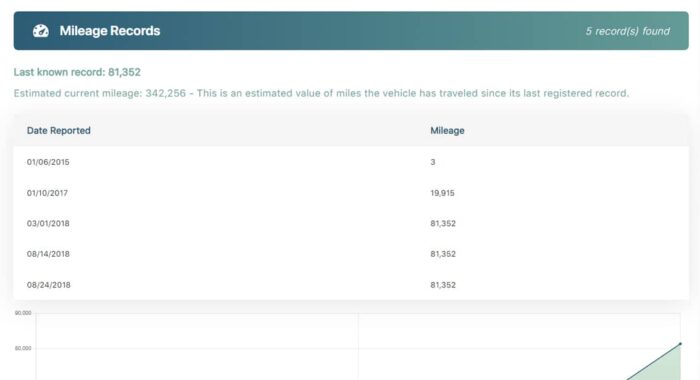

Ownership Records
Track prior owners and usage (personal, fleet, rental). More owners can mean missed mailers. Added another reason to run a VIN recall check and not wait for a letter.
Auction Information
Learn when and where a Smart crossed the block. View auction history like the date it sold, price, estimated retail, and up to +10 auction photos, for better decisions.
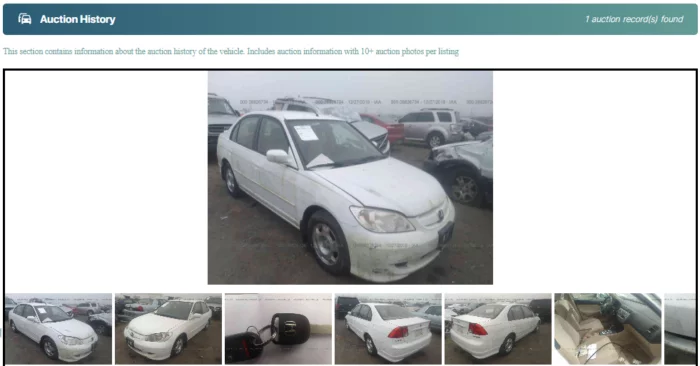

Accident Records
See if your Smart was involved in reported crash accidents or severe damage events. If a recall involves steering or fire risk, prior accident damage can complicate repairs; this context helps you plan.
Loan & Lien Information
See if a lender still has an interest. Clean payoff record, smooth dealer scheduling, and courtesy transport for recall repairs.
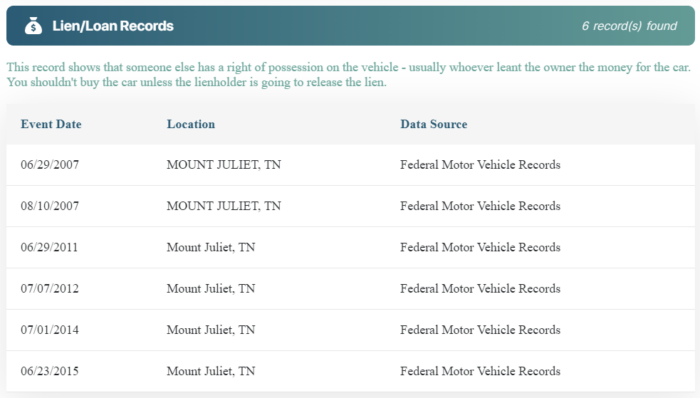
Common Issues Leading to Smart Recall
Smart vehicles have faced several recalls due to safety and reliability concerns. Common issues include loss of steering control due to reduced visibility.
When checking for a Smart, several factors come into play. Here’s a breakdown of elements that could affect your Smart and lead to a recall:
Loss of Steering Control
Left-front steering knuckle
When steering parts fail, control can disappear in an instant. In some 2017 Smart Fortwo/Fortwo Cabrio cars, a flawed casting could crack the left-front steering knuckle. Drivers might feel nothing until it lets go, then the car can veer and crash. Mercedes-Benz dealers were instructed to inspect and replace the knuckle as needed, free of charge. NHTSA lists this as Recall 17V447; owner letters went out in October 2017, and the affected population was small (about 110 cars built Mar–Jun 2017).
Steering-gear mounting bolts
A second steering case hit 2014–2015 Fortwo (451), including some Electric models: steering-gear mounting bolts could break if they were from an out-of-spec batch. A loose rack is no joke. Handling degrades, and control can be lost. Dealers replaced the bolts; NHTSA lists it as Recall 15V192 with campaign bulletins issued in May 2015 and about 5,058 vehicles affected.
Fire Hazards
Engine-bay insulation mat
Heat and batteries demand respect. In 2008–2009 Fortwo (451) models, the engine-bay insulation mat could sag and touch the hot exhaust. That contact raises the chance of a fire, especially after years of heat cycles. The fix: replace the rear insulation mat (and add shielding where needed). NHTSA calls this Recall 18V273, with interim mailers in June 2018 and an affected count of around 42,781 units.
High-voltage battery
A rarer but serious EV case: 2019 Smart EQ Fortwo. A cell-internal weld in the high-voltage battery could detach, causing a sudden stall and, in rare circumstances, electrical arcing inside the pack, another fire risk. The remedy is straightforward but expensive: replace the HV battery. NHTSA lists Recall 20V107; notices were sent April–May 2020. Wirtz Law’s write-up summarizes the NHTSA report; MBUSA’s bulletin shows it impacted one U.S. vehicle.
Unintended Vehicle Movement (Rollaway Risk)
Parking-brake cable lock nut
A parked car should stay put. In 2016 Fortwo (453), the parking-brake cable lock nut might loosen over time. As the lever travel grows, holding force drops; on a hill, that can mean a rollaway. The fix is to replace the lock nut and verify proper adjustment. This is Recall 17V448, with owner letters sent in September 2017.
Other Notable Issues
Reduced visibility/lighting compliance
Seeing and being seen matter at night. Some 2016 Fortwo cars left the factory without a sealed cap for the horizontal headlamp adjuster (FMVSS 108). If someone re-aims those lamps off-spec, your road view shrinks, and oncoming drivers get glare. Dealers installed sealing caps to lock the horizontal aim. That’s Recall 17V179; NHTSA shows interim letters in May 2017 with later remedy notices.
Understanding the Smart Recall Process
NHTSA reviews safety complaints and, when a defect is confirmed, the automaker must issue a recall under NHTSA oversight. You can then check your Smart by VIN and get a free remedy at a dealer.
Discover the full breakdown of the Smart Recall Process below:
Report the Problem
If your Smart is doing something unsafe, tell NHTSA. Your complaint is logged, matched with other VINs, and can help spark an official investigation.
Investigation
Once a complaint is submitted, the NHTSA follows a multi-step process to determine whether a recall is necessary.
- Screening: NHTSA’s Office of Defects Investigation reviews patterns in complaints and other data.
- Analysis: Defect petitions are reviewed in detail. If denied, the decision and reasoning are publicly posted in the Federal Register.
- Investigate the Issues: When Smart’s safety concerns are confirmed, NHTSA launches a formal investigation, ending in either no defect or a recall.
- Recall Management: NHTSA ensures owners are notified and monitors repair completion rates.
Recalls
A safety recall means the manufacturer must inform owners and correct the problem. Recalls happen when a vehicle or component is unsafe or doesn’t meet regulations. Most are voluntary, and manufacturers are required to repair, replace, refund, or buy back the affected vehicle.
How Smart Vehicle Recalls Are Handled?
When a safety problem is found on a Smart, three groups work together: the manufacturer, NHTSA, and you, the owner.
This teamwork finds defects, informs drivers, and makes sure fixes are completed to keep your vehicle safe and legal. Below is a detailed breakdown of each role
Automaker Role
Smart’s global brand is now a 50:50 joint venture between Mercedes-Benz and Geely, while Mercedes-Benz USA still supports U.S. Smart owners, even though new-car sales ended here after 2019.
In a safety recall, the automaker must investigate the defect, file a Part 573 report, plan the fix, notify owners, supply parts to dealers, and file quarterly progress updates. By federal law, the remedy is free when the notice is issued within 15 calendar years of the vehicle’s first retail sale; beyond that window, manufacturers may still help, but the “no-charge” requirement no longer applies.
In the U.S., Smart recall work is typically handled by Mercedes-Benz dealers, who follow the factory bulletin and close out the campaign on your VIN. That’s the practical chain: the factory finds the issue, files with NHTSA, moves parts, and pays dealers, so your repair costs nothing during the legal window.
NHTSA’s Role
NHTSA is the national safety referee. It gathers complaints, runs investigations, and manages the official recall record. Its Recall Management Division monitors manufacturer filings, owner letters, free-remedy compliance, and completion rates.
For drivers, NHTSA offers the VIN Lookup and the SaferCar app to catch recalls early. Note the scope: the VIN tool covers safety recalls that are incomplete and those conducted over the past 15 calendar years. If your Smart is older, you may need to contact a dealer to research older campaigns. For more convenience use you can use our Smart recall check and get the recall history in seconds.
NHTSA also publishes recall documents so anyone can see what the issue is, how risky it is, and how the remedy works. The agency’s goal is straightforward: get dangerous defects fixed and keep the process transparent.
Your Role as the Vehicle Owner
Your job is simple but important. Find your VIN and check it at least a couple of times a year. If there’s an open Smart recall, call a Mercedes-Benz dealer and book the free repair; bring the notice if you have it, and keep the invoice after the work is done.
If your Smart is older than the 15-year free-remedy window, ask anyway; some fixes or goodwill help may still be available, but the “no-charge” rule may no longer apply. If you hit a snag, you can report it to NHTSA and track the campaign documents online.
Do the fix quickly; it protects you, your passengers, and your car’s value, and it closes the loop in NHTSA’s system so others see the progress.
Get Smart Window Sticker by VIN
Already checked recalls? Go deeper with a Smart Window Sticker by VIN from Detailed Vehicle History. See original MSRP, trim, exterior/interior colors, option codes, safety equipment, packages, fuel economy ratings, and warranty details on one clean label.
Match the car you’re buying or selling to what it left the factory with, spot missing features, and confirm seller claims before you sign. It’s the fast way to protect your wallet, strengthen your negotiation, and feel certain your tiny city hero is exactly what it says it is.
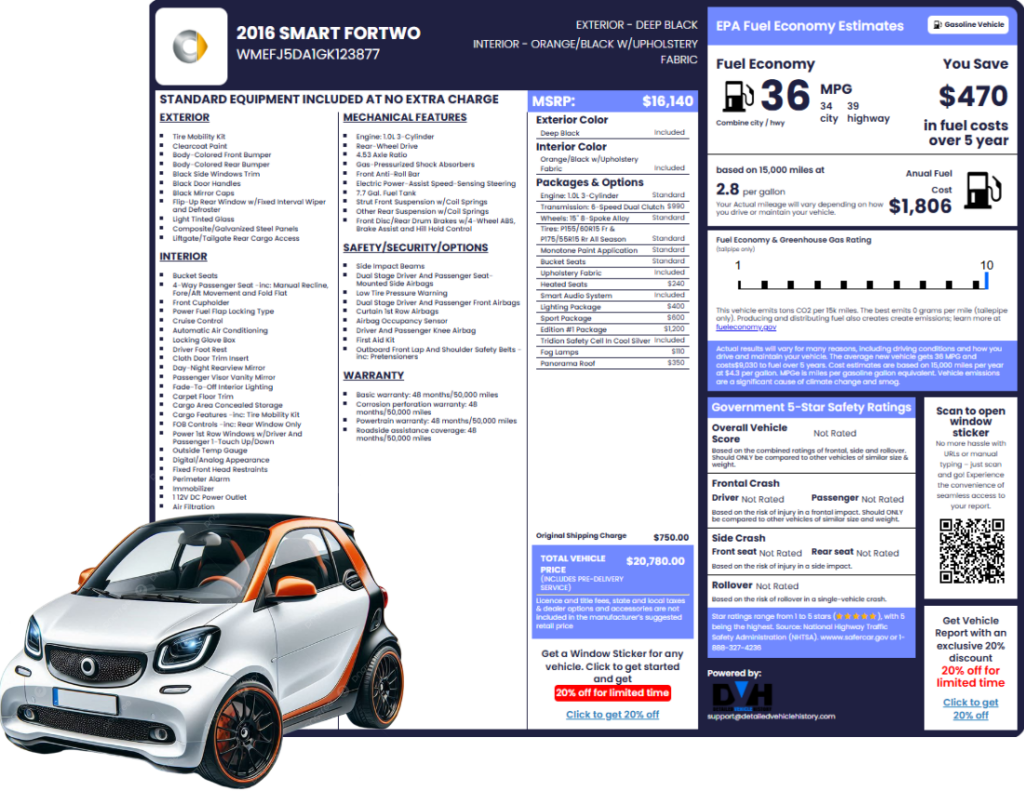
Why Use Detailed Vehicle History to Check Smart Recall?
Smart is tiny on the outside, but your safety story is big. Detailed Vehicle History delivers more than recall status. We pair your Smart Recall Check with title brands, odometer logs, ownership changes, accident/damage, lien records, service notes, auction photos when available, and more.
One report. Clear risks. Dealer-ready details. Verify what the seller says, plan the free recall repair, and keep paperwork that protects value. Simple, fast, and made for city cars that deserve big-car confidence.
Recall Check For Others Manufacturers
FAQ about Smart Recalls Check
Are Smart recall repairs free?
Yes. Safety-recall repairs must be done at no charge, parts and labor, at an authorized dealer (Mercedes-Benz for Smart).
How do I know if my 2008–2010 Smart shows up?
NHTSA’s VIN tool lists open safety recalls from the last 15 calendar years. Older vehicles may not display historical campaigns; ask a dealer to check by VIN.
For more convenience use you can use our Smart recall check and get the recall history in seconds.
Can I bring my Smart to any Mercedes-Benz dealer for recall repairs?
Yes. U.S. Smart recalls are handled through the authorized Mercedes-Benz dealer network; owner notices direct Smart owners to contact or visit an authorized Mercedes-Benz dealer for the free recall work.
Can a dealership sell a Smart with an open recall?
Under U.S. federal law, new vehicles can’t be sold with an unfixed safety recall, but there’s no federal ban stopping dealers from selling used cars with open recalls. So a used Smart can be sold with unresolved recall work. Check the VIN before you buy!
What happens if my Smart is recalled and there’s no fix yet?
Automakers must notify you even if a remedy isn’t ready, then send a second letter when parts or software are available. Follow any interim safety steps (for example, parking outside) and stay in contact with the dealer until the remedy arrives.
Can the authorized dealer refuse to fix a Smart recall?
If your VIN is covered and the recall notice falls within the legal window, the remedy must be provided at no charge. The free-remedy obligation doesn’t apply if the vehicle’s first retail sale was over 15 calendar years before the notice date; after that is the Smart goodwill. You can report problems to NHTSA.
Will I get a loaner or courtesy car for a Smart recall?
There’s no automatic right to a loaner or rental during recall repairs. Some automakers/dealers provide transportation in serious cases or when advised in the recall notice, but it’s not required by law. Ask your dealer what they offer.
How long does a Smart recall take to fix?
It depends on the parts and procedure. Some items (e.g., headlamp caps) are quick; hardware or heat-shield installs take longer. Your dealer will estimate the time when parts are allocated. (Still free.)
Can I get reimbursed if I already paid for a repair later covered by a Smart recall?
Yes. Manufacturers have reimbursement policies during recall windows; keep invoices and contact customer care for instructions.
Where can I check Smart recalls by license plate if I don’t have the VIN?
NHTSA’s official lookup works by VIN (not plate) and shows incomplete safety recalls from the last 15 years.
If you don’t have the VIN, get it from the car registration, or use a license plate lookup by Detailed Vehicle History, to see the Smart history report, including the recall history, then schedule the free repair if needed.
What if I missed a Smart recall for years?
Safety recalls don’t expire, but the no-charge remedy can be limited by law to vehicles first sold within 15 years of the notice date. Even if your Smart is older, ask the dealer.
Manufacturers sometimes still assist. Either way, unresolved recalls are a safety risk, so book the repair as soon as possible.
Will a Smart recall lower my car’s value?
An open recall can, because buyers see the cost or time risk. A completed recall typically restores confidence and keeps proof in your records. (Consumer outlets advise fixing recalls promptly.)
Which Smart models were recalled in the U.S.?
Notable campaigns covered Fortwo (451/453) gasoline and electric variants (e.g., steering bolts on 2014–2015 cars; headlamp compliance and parking-brake parts on 2016–2017; insulation mat fire risk on 2008–2009; one 2019 Electric Drive battery). Check by VIN to be sure.
What is a “silent recall,” and does Smart do them?
People use “silent recall” to describe service campaigns or customer-satisfaction programs that aren’t NHTSA safety recalls. A true safety recall is filed with NHTSA and must include a free remedy (subject to the 15-year rule). Service campaigns may offer fixes, but don’t follow the same federal process. Check your VIN on the official NHTSA tool to know which one you have.

